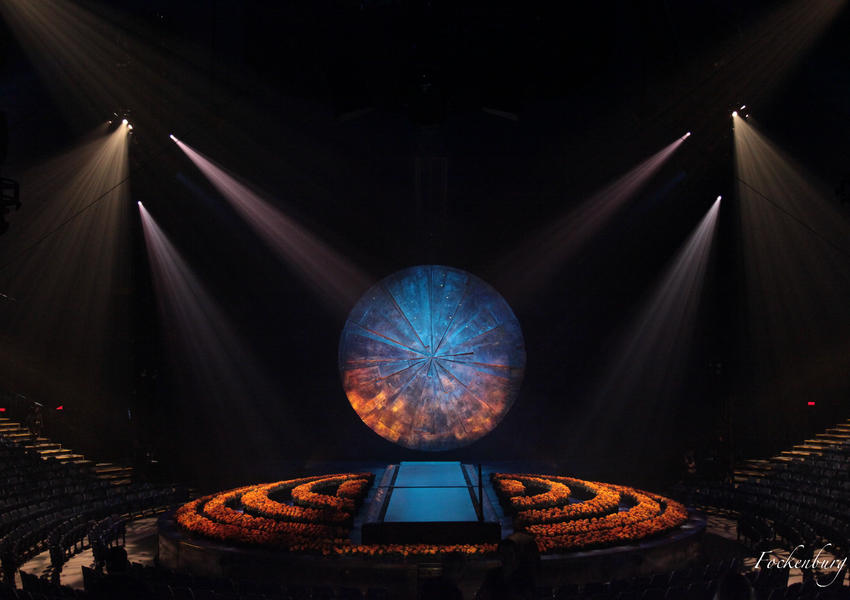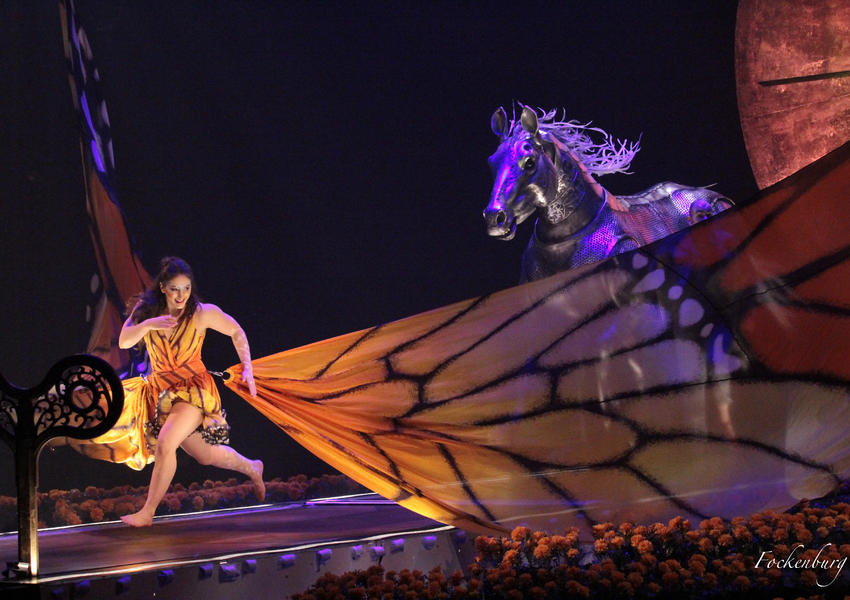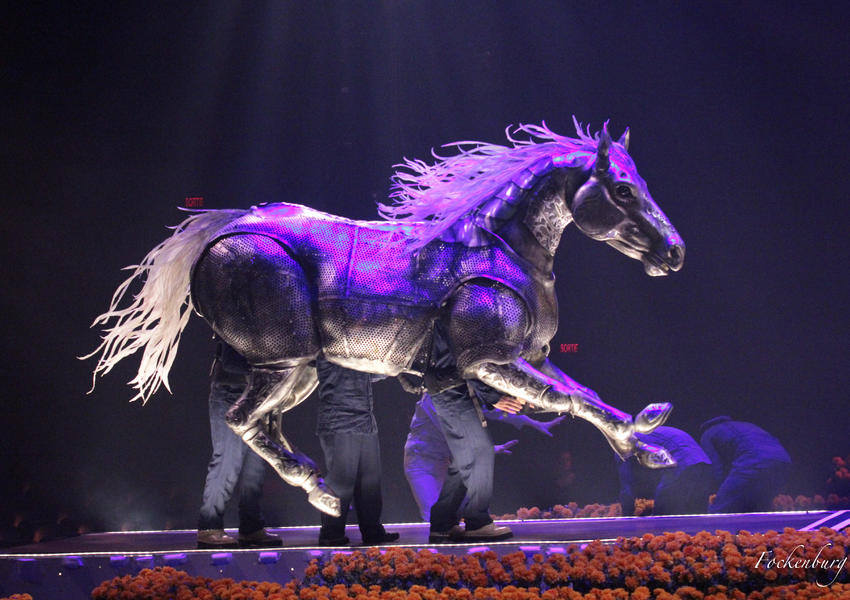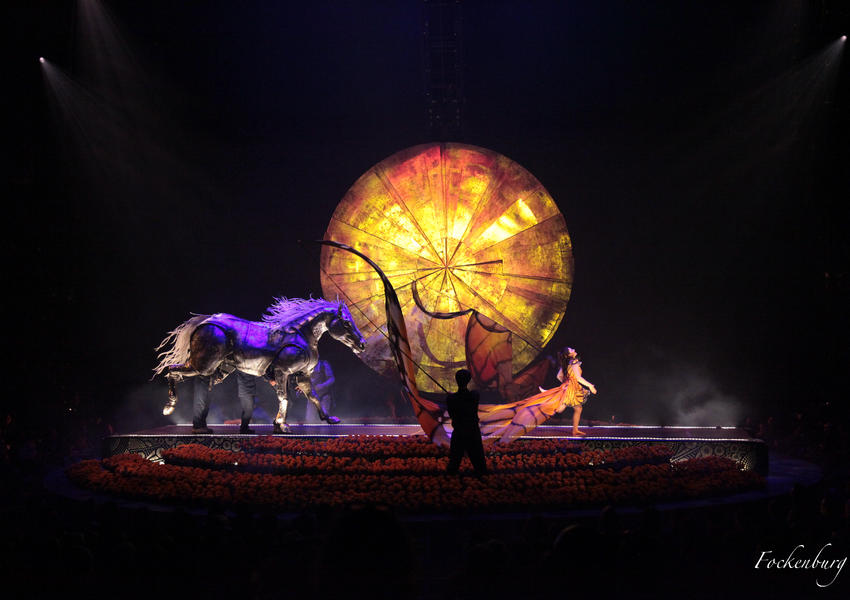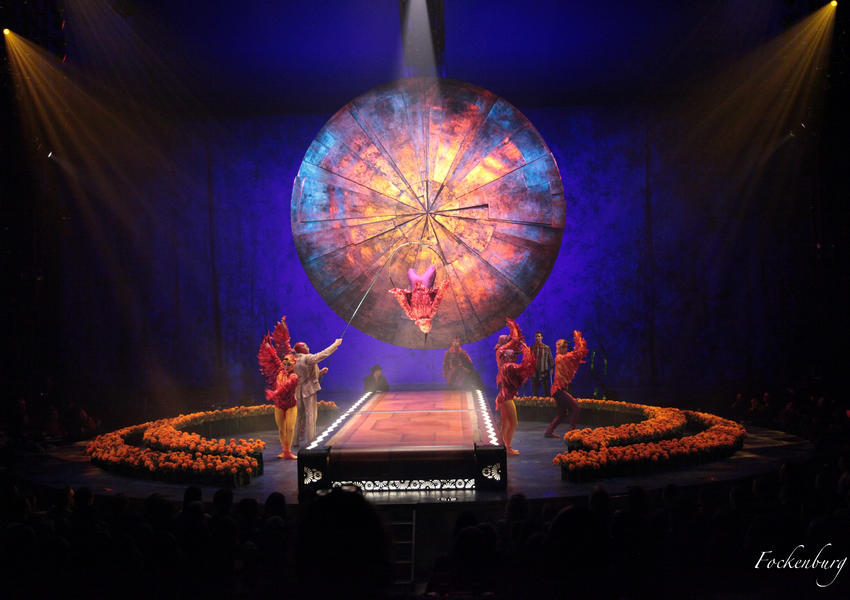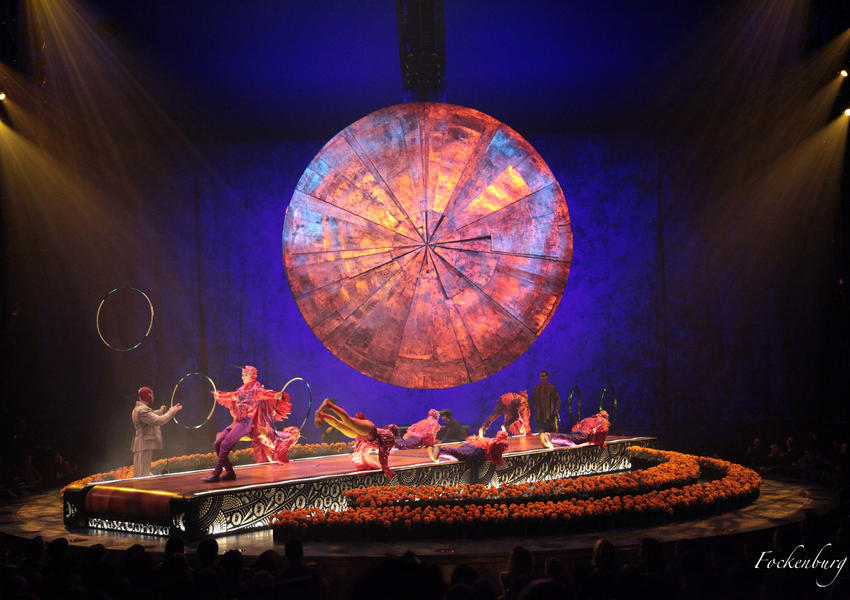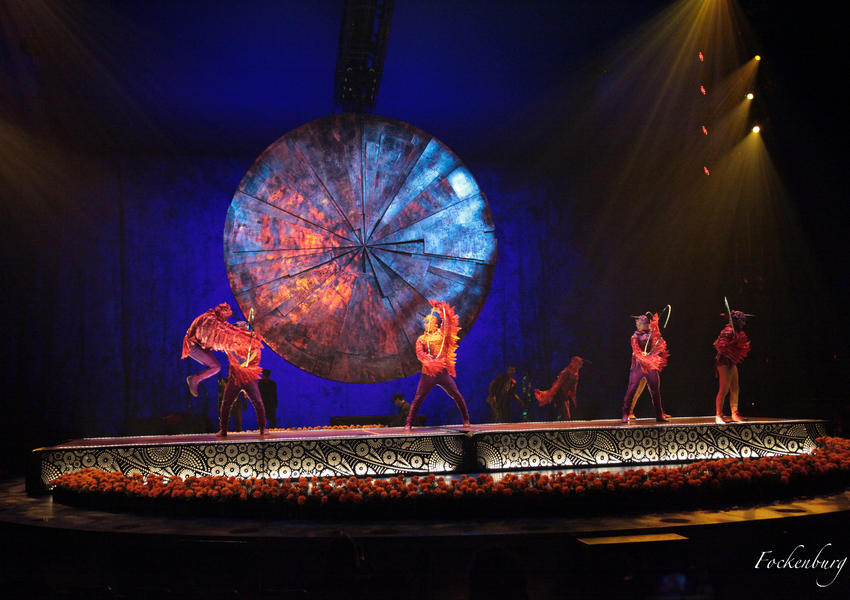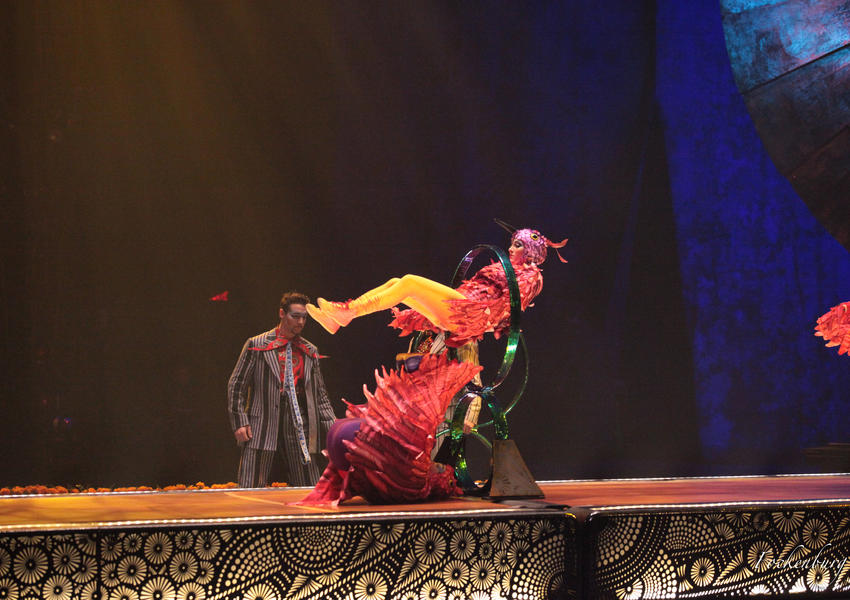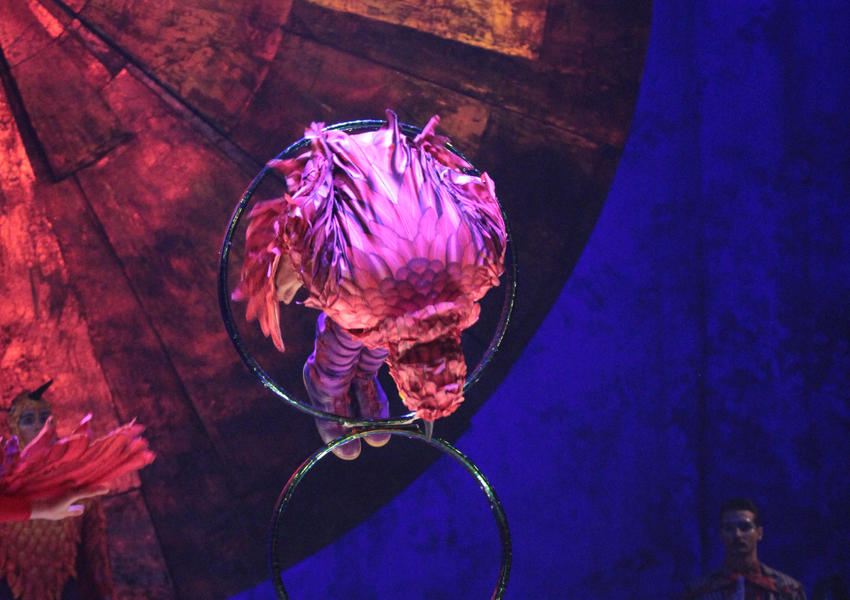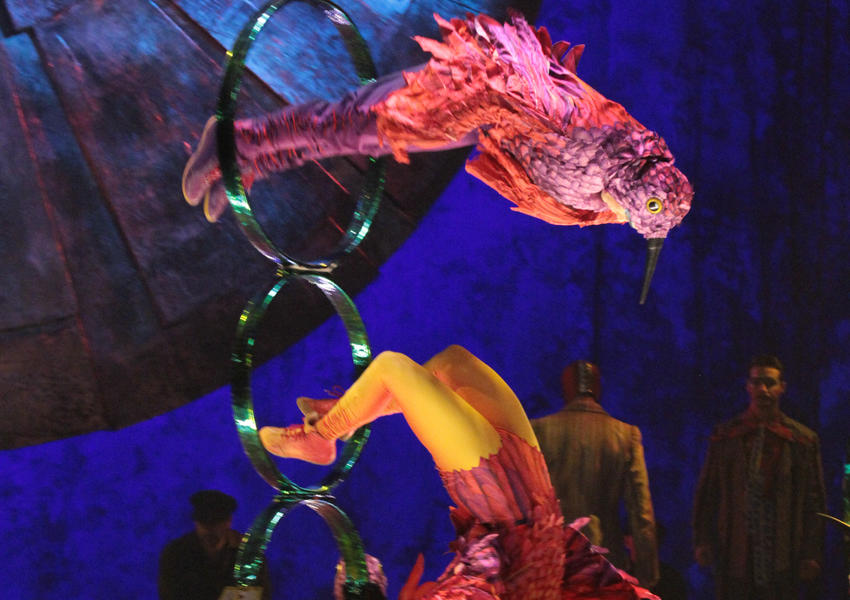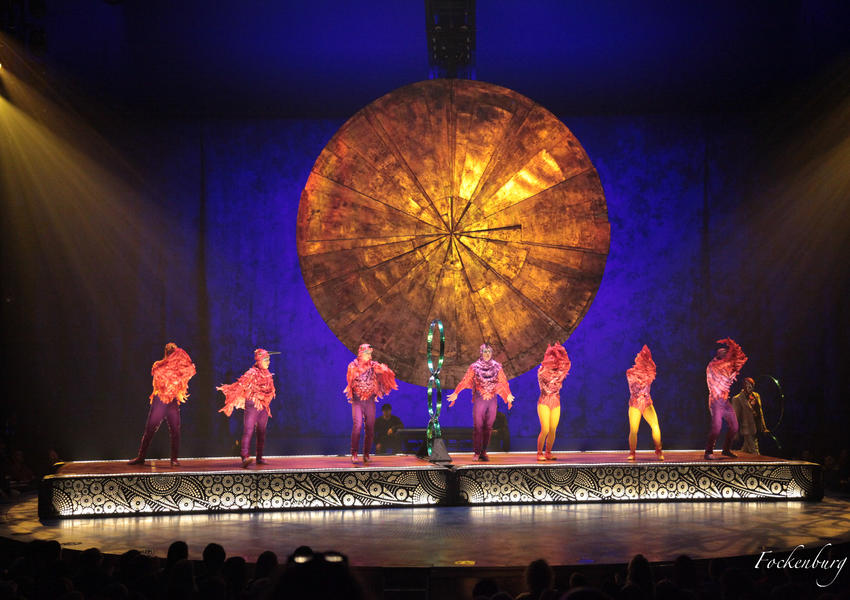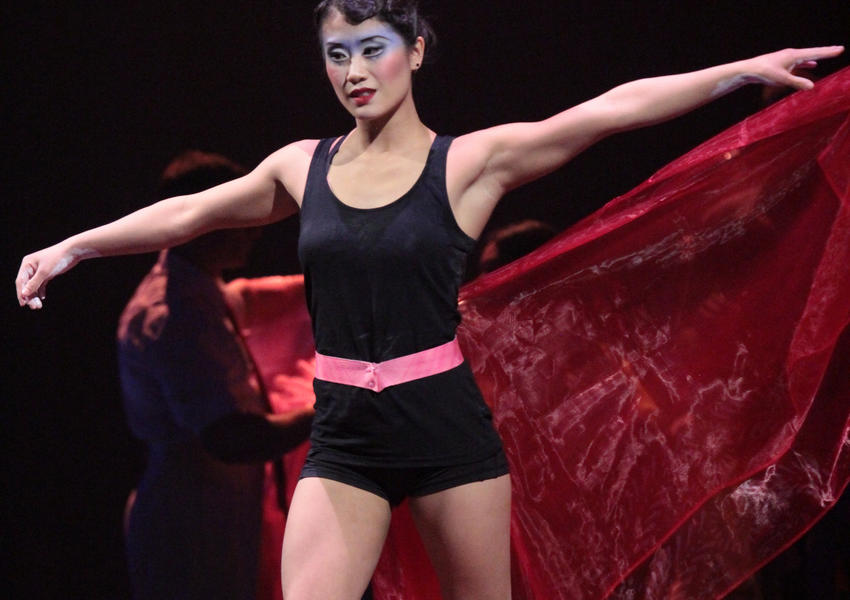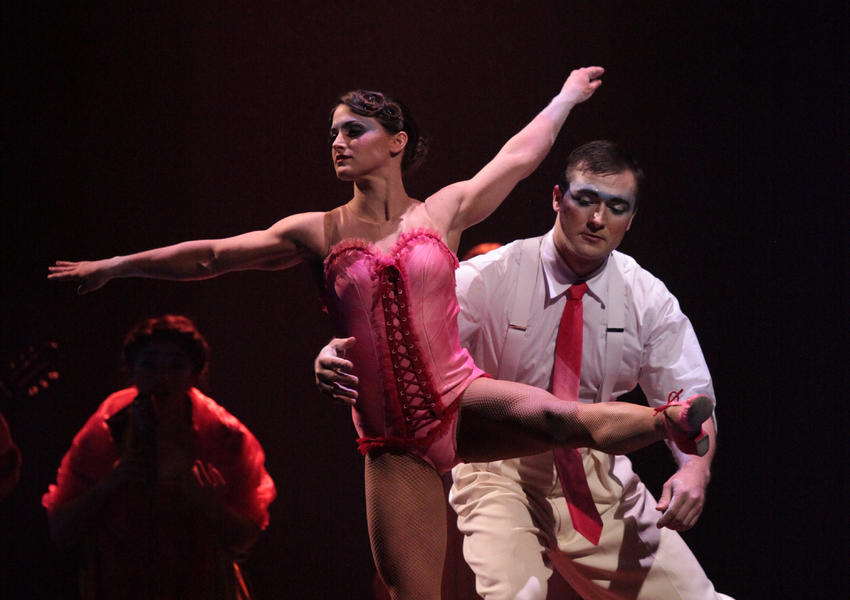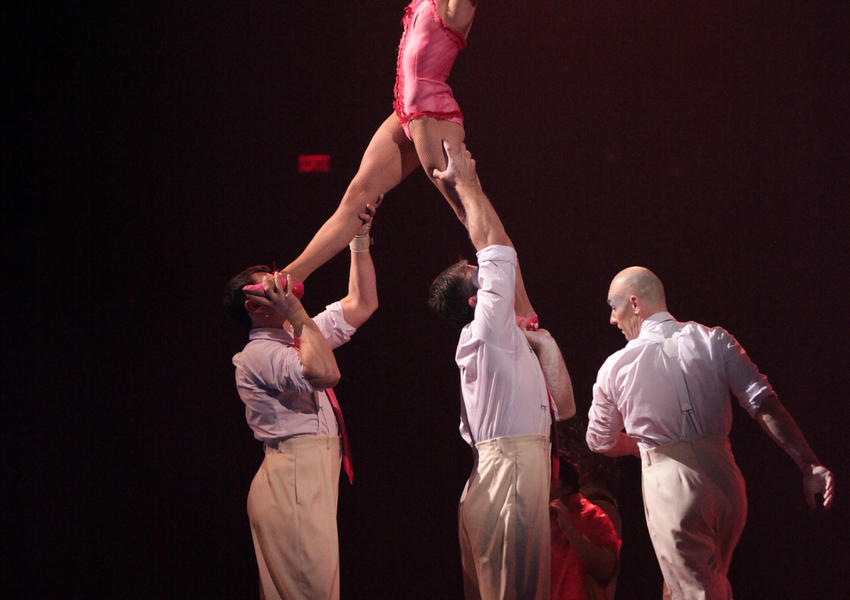Cirque du Soleil's Luzia at the Royal Albert Hall
"A series of innovations never seen in a Cirque show before, like the use of a moving travelator where acrobats tumble through hoops"...
Canning supplied –treadmills/tumbleators for Hoop-Diving in this production of Cirque Du Soleil LUZIA.
These were specified as 2 x 1800mm wide belts x 2m wide frames each 5m long - Treadmill Conveyor Tumbleator style units, suitable for specifically being used as an acrobatic apparatus. Designed & supplied for Cirque du Soleil during 2015 for a LUZIA show each have a:
- A 15kW motorised drive drum, which will give allow the treadmill belt to be bi-directional
- Inverter drive units
- Each unit was fitted with special Triple lift casters pneumatically operated for raising & moving units around easily on stage
- Side frame panels down both sides of unit which facilitate lighting equipment and battery equipment to provide power during each show.
- Maximum safety for user: using leading material technology for the belt to run on.
In a year that marks the 30th anniversary of Cirque du Soleil's appearances in London, which since 1996 have included an annual residency at the Royal Albert Hall (surely the world's most glamorous 'big top' of them all), there couldn't be a more welcome visitor in these polarised times than a show of such literally soaring beauty, thrilling athleticism and physical daring.
It's true that in recent years I've started to find Cirque sometimes repetitive and their shows a bit too formulaic; but Luzia feels like a return to the revolutionary combination of form and content that finds them at their creative best, folding a series of ever-dazzling circus acts into the fabric of a show that is as cohesive as it is exhilarating. The randomness of the structure of other shows is replaced here by a serious sense of momentum, light and shade. Tellingly, too, the enjoyment factor a Cirque show seems to be inverse proportion to their use of clowns; here that usual heavy lifting is confined to just one specimen, whose routine doesn't outstay its welcome, either.
Part of the pleasure is its specificity: instead of a weird kind of abstract, mythic internationalism, Luzia is conceived with a unity of purpose to provide what the show subtitles "a waking dream of Mexico".
And into this dream landscape, gorgeously conjured in the sets of Eugenio Caballero and costumes of Giovanna Buzzi, are brought a series of innovations that I've never seen in a Cirque show before, like the use of a moving travelator that acrobats tumble through hoops upon in precision timing, or a giant sheet of a 14-metre high water curtain that reconfigures endlessly, which different trapeze and gymnastic acts - and the clown act, too - use to different purposes. It also acts as a kind of projection screen on which stunning images are beamed.
Co-writers Daniel Finzi Pasca (who also directs) and the late Julie Hamelin Finzi provide a rich framework for the usual (but of course also deeply unusual) parade of acts that include hand-balancing atop two increasingly tall poles, gymnasts that launch themselves off swings on opposite sides of the stage to land on the other one after executing a somersault midair, and a contortionist whose body can fold entirely in on itself.
It is all underscored by a hauntingly lovely score by Simon Carpentier, played and sung live on stage, that puts the seal on a ravishing evening.
